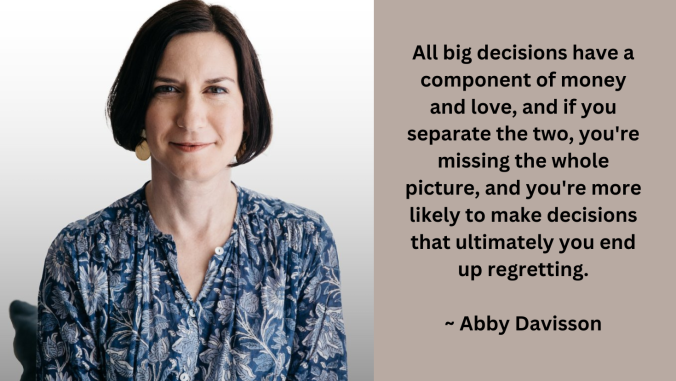Is 'agile leadership' the next sustainability buzz phrase?
<p>Read between the lines of corporate sustainability roles, and you'll find that leaders are handling a lot more than meets the eye.</p>

Athlete by bikeriderlondon via Shutterstock
Conference season is here. During this time of reconnecting with colleagues, the top question I receive is: “What are the newest trends in the job market?” I’ll take the opportunity to share my response with you and the rest of the GreenBiz community.
Today’s needs for agility
In a world of rapidly changing business strategies, challenging consumer demands, new product creation and formidable data sets, it seems like everything is moving at the speed of light. Rapid is a common prefix. Rapid response. Rapid rewards. Rapid transit. Rapid hair loss.
In such a quickly evolving environment, business leaders must learn to adapt and stay ahead by being agile. Agility is the new buzzword. It applies to business as well as to sustainability leadership.
From sports to software design to business and leadership, I have seen “agility” bandied about as an increasingly popular term in recent years. The idea is that adaptability and flexibility allow athletes, computer programs, organizations and corporate leaders to react to circumstances where outcomes may be unpredictable or change unexpectedly. In doing so, they take advantage of uncertainty, factoring it into a response that accounts for the eddy of constant changes.
As a recruiting professional with over 15 years of CSR experience, I can’t help but notice how well agility applies to sustainability leadership.
Agility in business and leadership
At the Society for Human Resource Management (SHRM) Strategy Conference last month, Paula Caligiuri, professor in the Human Resource Management Department at Rutgers University, presented a session about "How to Build a Pipeline of Culturally Agile Professionals." She spoke of the importance of managing employees who are culturally agile in today’s economic and global conditions.
SHRM also offers a webcast on agility in leadership called "Learning Agility: The X-Factor in Identifying and Developing High Potentials." It is presented by Vicki Swisher, senior director of Intellectual Property Development at Korn/Ferry International. Swisher recently wrote the book "Becoming an Agile Leader: Know What to Do…When You Don’t Know What to Do." In it, she proposes five qualities of an agile leader: self-awareness, mental agility, people agility, change agility and results agility.
I predict that this article will be the first of many within GreenBiz that feature “agile” or “agility” in its title.
How is sustainability changing?
Recently, I have noticed a trend within sustainability departments moving away from their standalone offices to being more integrated within other, more traditional functions. Sustainability leaders need agility to shift with their sustainability office. I would argue that agility is the greatest survival skill required for a sustainability professional, perhaps at the expense of sustainability being removed from his/her title.
From an interview in a report I co-authored with Vox Global, "Selling Sustainability From the Inside," Beth Shiroishi, VP of sustainability and philanthropy at AT&T, said it best. “I think of myself and my team as chameleons,” she said. “Being able to think and communicate in the same fashion as the business unit we’re working with is, for me, the most important skill set needed to be successful.”
Sustainability leaders do need to sell sustainability throughout the organization. Agreed. The additional insight I have for 2013 is that leaders need agility not only in how they are communicating, but also in where they sit within their organization. They can expect to move around in different functions within the business.
Integrating CSR job functions
Individuals in sustainability leadership positions are being integrated into other functions, thereby taking on other responsibilities. For example:
- Campbell Soup added Public Affairs and Community Affairs to Dave Stangis’ scope
- Christy Consler went from Sustainability to HR and CSR at Jamba Juice
- Gwen Migita added Community Affairs to her title at Caesars
- Ezra Garrett is also in charge of Community Relations at Pacific Gas & Electric
Discussing his role at Campbell, Stangis emphasizes the impact of integration on the sustainability profession. “The integration point is very important,” he said. “It is a key part of my job every day. In the last couple years, we have created a sustainable agriculture job in our manufacturing operations and a sustainable procurement job in our procurement organization. That’s the future of sustainability (at least in the strategy that I run).”
Migita attributes her added responsibilities to a progression in Caesars’ sustainability goals. “As Caesars sought to integrate engagement with employees, communities and operations, it made sense to evolve my role into one which incorporated long-standing functions (Community Relations) with environmental and social sustainability,” she said. “The intersection among corporate philanthropy, employee volunteer management and public affairs with sustainability is such an interesting space to work in.”
Similarly, Garrett says integration at PG&E was mutually beneficial for sustainable practice and the areas into which sustainability was incorporated. “Bringing corporate sustainability into an existing function -- in PG&E’s case, Community Relations -- that was already fully integrated across the enterprise and leading our community outreach strategy, really strengthened our sustainability work with core operations and enhanced our external stakeholder engagement and storytelling capabilities,” he said.
Are there implications?
This doesn’t mean that sustainability is suffering as a field. On the contrary, sustainability is vibrant, and companies continue to remain committed to CSR goals. However, this does mean that the number of standalone offices is decreasing. I don’t think this will affect sustainability in the short-term. But I do fear that if sustainability is hit when specific individuals have not been assigned to hold down a post, the field will suffer in the long-term.
These recent changes in CSR have to do with the evolution of the field of sustainability. It has been realized that sustainability’s greatest impact is often within a specific function, depending on the industry of the company. When sustainability moves to another department, it moves to the department where the most sustainability work already was happening.
In an agile business with so many rapidly moving parts, the department becomes more secure if attached to a function that is historically strong within the company. In an agile society where things move quickly, if it’s not attached to another function, then a bump in the road could cause it to get lost in the fray.
Image of athlete by bikeriderlondon via Shutterstock





